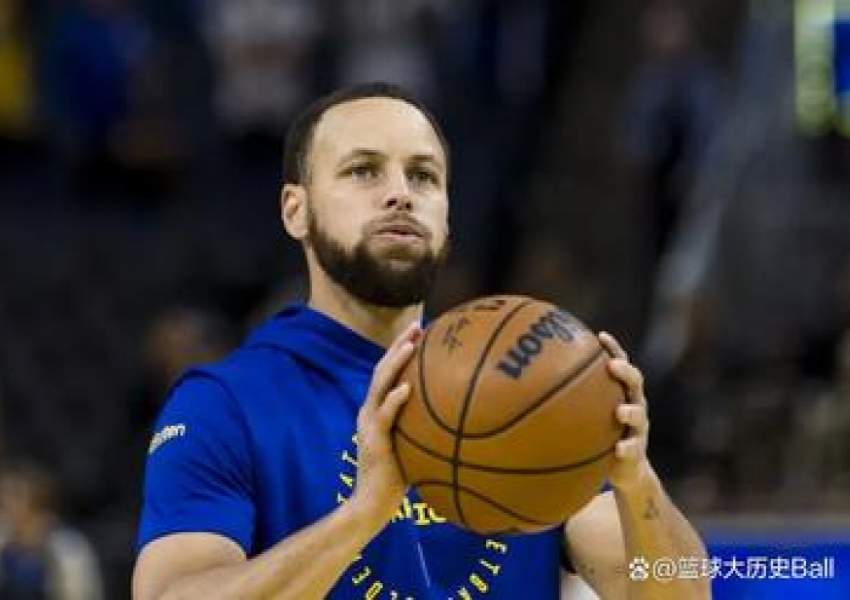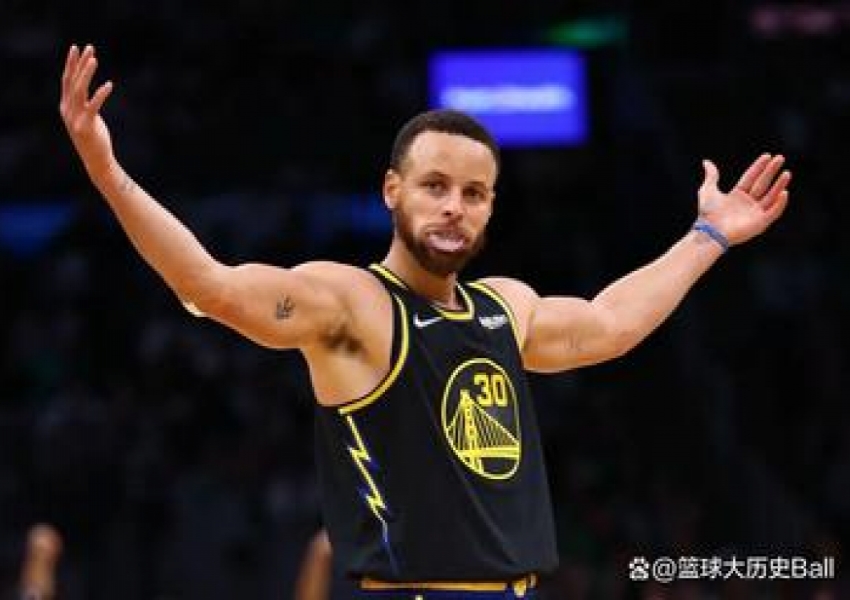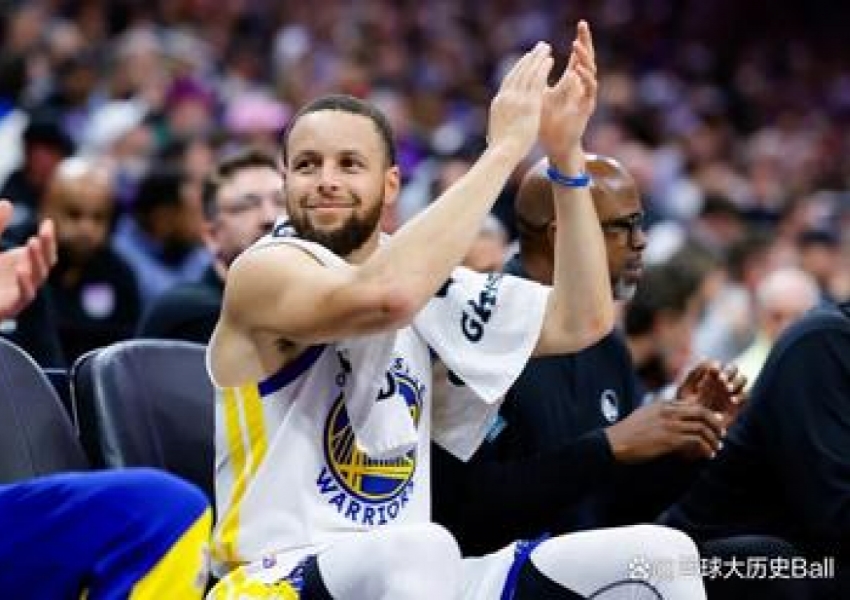4,000 Threes! Just How Impossible Is Stephen Curry’s Latest Record?
Stephen Curry has done it again.

In the Warriors' last game against the Trail Blazers, Curry knocked down five three-pointers, bringing his career total to 3,998. With the way he’s been shooting this season—averaging 4.5 threes per game—it’s almost certain that in his next matchup against the Kings, he will become the first player in NBA history to hit 4,000 career three-pointers.

But this milestone raises some big questions:

- Just how difficult is it to reach 4,000 threes?
- Can any active player realistically challenge Curry’s record?
- Where will Curry’s final three-point total end up by the time he retires?
Let’s break it all down.
4,000 Threes: An Impossible Feat?
To truly appreciate how absurd this milestone is, let’s take a look at the NBA’s all-time three-point leaderboard:
- Stephen Curry – 3,998 (soon to be 4,000)
- James Harden – 3,124
- Ray Allen – 2,973
- Reggie Miller – 2,560
- Damian Lillard – 2,510
To put this in perspective, Curry has nearly 900 more threes than Harden, who is second all-time. Even if Harden were still in his prime, it would take him two to three more elite seasons to catch up—something that isn’t realistic at this stage of his career.
Meanwhile, Ray Allen—whom Curry surpassed in 2021—never even reached 3,000 threes. That means Curry has essentially outpaced every legendary shooter in history by a landslide.
If that’s not enough, consider this:
- From 2013 to 2019, a seven-year stretch, Curry drained 2,111 threes—which alone would rank 15th on the all-time list.
- This is more than the entire careers of Kobe Bryant (1,827), Jason Kidd (1,988), and Dirk Nowitzki (1,982).
- If Curry never played another game after 2019, he’d still be considered one of the greatest shooters in NBA history.
And here’s the craziest part: he missed almost an entire season in 2019-20 due to injury. If not for that lost year, he’d likely be approaching 4,500 threes by now.
Curry’s Shooting: It’s Not Just About Volume
The most mind-blowing aspect of Curry’s record isn’t just the sheer number of threes—it’s how efficiently he makes them.
Curry’s career three-point percentage stands at 42.4%, a mark that is nearly unheard of for someone who attempts such a high volume of shots.
To understand just how ridiculous this is, let’s compare him to other three-point shooters:
- Among players who have attempted at least 2,500 threes, Curry ranks third all-time in three-point accuracy.
- He has maintained elite efficiency despite defenses literally building entire game plans around stopping his shot.
- Many of his threes come from deep range, off the dribble, against double teams, or in high-pressure moments.
In other words, Curry isn’t just taking a high number of threes—he’s making them at an efficiency that defies logic.
Is 5,000 Threes Possible?
With 4,000 threes all but locked in, the next natural question is:
Can Curry reach 5,000?
Let’s do the math.
Since the start of the 2020-21 season, Curry has played 313 games and hit 1,503 threes—an average of 4.8 per game.
If we assume:
- Curry plays 70 games per season moving forward
- He continues hitting at least 4.5 threes per game
Then he would:
- Finish this season with about 4,100 career threes
- Hit at least 900 more threes over the next three seasons
This would bring his total to well over 5,000 threes.
However, there are some big challenges:
- Aging and Durability – Curry is already 36 years old. Expecting him to maintain elite shooting volume and efficiency into his 40s is a tall order.
- Role Changes – As Curry ages, his role may shift. He may take fewer shots and focus more on playmaking.
- Health – If injuries pile up, it could significantly reduce his three-point output.
That said, if anyone can shatter expectations, it’s Stephen Curry.
If he remains relatively healthy and adapts his game (like Ray Allen did in his later years), 5,000 threes is absolutely on the table.
Can Any Active Player Catch Curry?
For most NBA players, even hitting 3,000 career threes is a dream.
But what about 4000? Or 5000?
Realistically, James Harden and Damian Lillard won’t catch Curry. They are too far behind and are already past their respective peaks.
However, one name stands out:
Anthony Edwards – The Best Bet?
At just 23 years old, Anthony Edwards has already hit 1,046 career threes.
Even more impressively, this season he has hit more threes than Curry—with 257 makes compared to Curry’s 251.
If Edwards maintains his current pace of 4.1 threes per game, he could:
- Reach 4,000 career threes in about 10 seasons (by age 33)
- Potentially challenge Curry’s record if he plays into his late 30s
However, there’s a key issue—the league has changed.
Curry’s Record Will Eventually Be Broken, But His Legacy Never Will
Let’s be clear: someday, someone will surpass Curry’s total three-pointers.
But here’s the catch: Curry wasn’t just great at shooting threes—he revolutionized the game itself.
When Curry entered the NBA in 2009, teams averaged 18.1 three-point attempts per game.
In 2024, teams are averaging 37.5 three-point attempts per game—more than double.
This isn’t a coincidence. Curry didn’t just thrive in the three-point era—he CREATED it.
Future players will benefit from the culture Curry built. They will shoot more threes, start earlier, and have better coaching tailored to volume three-point shooting.
But no one will ever replicate what Curry did in the era he did it.
So yes, one day someone might surpass 4,000, even 5,000 threes.
But there will never be another Stephen Curry.
Copyright Statement:
Author: focusnba
Source: FocusNBA
The copyright of this article belongs to the author. Reproduction is not allowed without permission.
Recommended Blog
- Tension in New York? Mikal Bridges Calls Out Thibodeau’s “Plantation-Style” Rotation!
- Boom! Boom! 100% Shooting Night—Lakers Feeding the NBA’s Best Defensive Center…
- Nightmare: AD Out for the Season—Do the Mavericks Have a Future?
- Signed, Sealed, and Rejected: Montrezl Harrell’s CBA Dreams Crushed Amidst Controversy
- Confirmed ACL Tear: Farewell, Kyrie! Another NBA Superstar Falls…
- Blockbuster Alert! Kevin Durant and Anthony Edwards Teaming Up? A Potential NBA-Shaking Trade on the Horizon
- Officially Departed! Farewell, Zhang Zhenlin’s Mother! A New Era for China’s Women’s Basketball Begins
- Powell’s Injury Worsens! Are the Clippers in Trouble Again?
- He's Back! The NBA Superstar Collector Strikes Again—Devin Booker Can't Resist...
- The Sky Is Falling! Another Spurs Star Done for the Season—2025’s Projected No. 1 Pick Flirting with San Antonio…
Hot Blog
- Boom! Boom! 100% Shooting Night—Lakers Feeding the NBA’s Best Defensive Center…
- Nightmare: AD Out for the Season—Do the Mavericks Have a Future?
- Signed, Sealed, and Rejected: Montrezl Harrell’s CBA Dreams Crushed Amidst Controversy
- Confirmed ACL Tear: Farewell, Kyrie! Another NBA Superstar Falls…
- Kevin Durant = Three First-Round Picks? In Just Two Years, the Suns Lost Big!
- Major Decline! What Is De'Aaron Fox’s True Level with the Spurs?
- Tension in New York? Mikal Bridges Calls Out Thibodeau’s “Plantation-Style” Rotation!
- Completely Out of the Rotation! Why 25-Year-Old Cam Reddish Can't Get on the Court Anymore
- A Miraculous Buzzer-Beater—But What Level Is Kawhi Leonard Really At Now?
- 4,000 Threes! Just How Impossible Is Stephen Curry’s Latest Record?